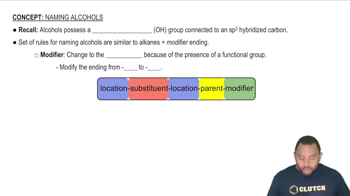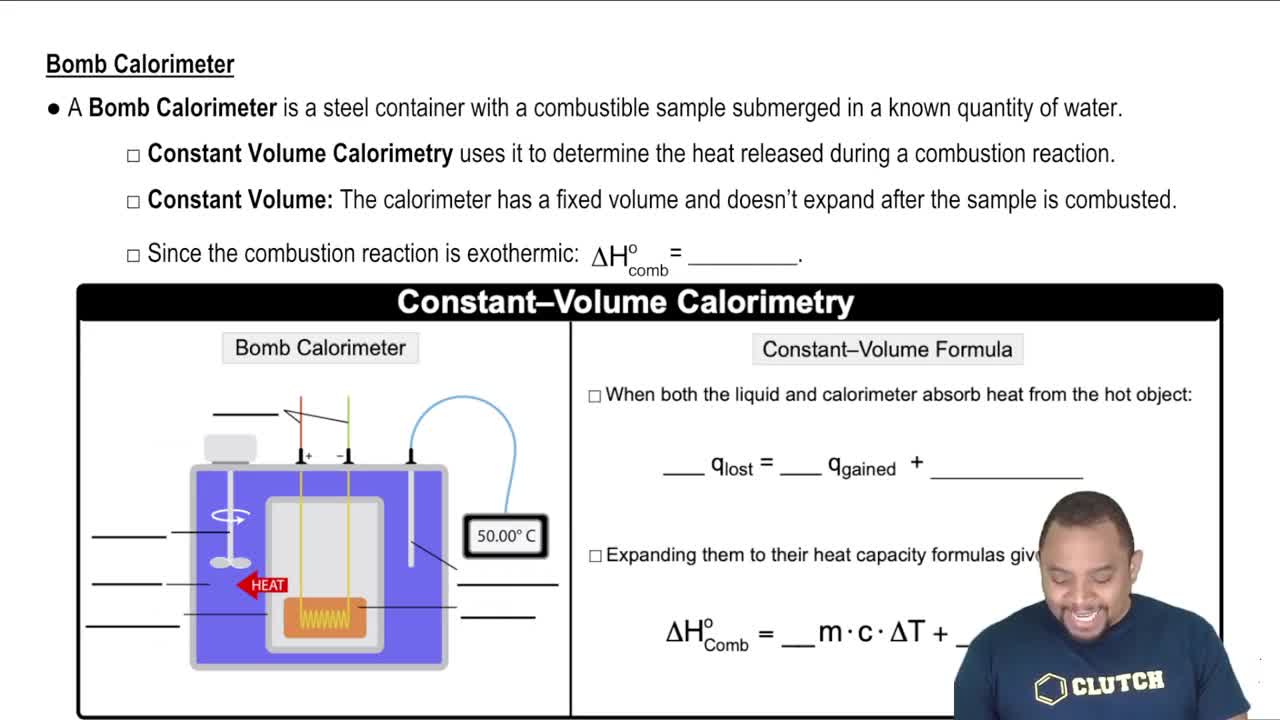A person suffering from hyponatremia has a sodium ion concentration in the blood of 0.118 M and a total blood volume of 4.6 L. What mass of sodium chloride would need to be added to the blood to bring the sodium ion concentration up to 0.138 M, assuming no change in blood volume?
Ch.4 - Reactions in Aqueous Solution
Chapter 4, Problem 66
The average adult male has a total blood volume of 5.0 L. After drinking a few beers, he has a BAC of 0.10 (see Exercise 4.65). What mass of alcohol is circulating in his blood?
 Verified step by step guidance
Verified step by step guidance1
Step 1: Understand that BAC (Blood Alcohol Concentration) is expressed as a percentage, which represents the mass of alcohol per volume of blood. A BAC of 0.10 means there are 0.10 grams of alcohol per 100 mL of blood.
Step 2: Convert the total blood volume from liters to milliliters. Since 1 liter is equal to 1000 milliliters, multiply the blood volume in liters by 1000 to get the volume in milliliters.
Step 3: Calculate the total mass of alcohol in the blood by using the BAC value. Multiply the BAC (in grams per 100 mL) by the total blood volume in milliliters, and then divide by 100 to account for the BAC being per 100 mL.
Step 4: Set up the equation for the mass of alcohol: \( \text{Mass of alcohol} = \left( \frac{\text{BAC}}{100} \right) \times \text{Total blood volume in mL} \).
Step 5: Solve the equation to find the mass of alcohol circulating in the blood.
Key Concepts
Here are the essential concepts you must grasp in order to answer the question correctly.
Blood Alcohol Concentration (BAC)
Blood Alcohol Concentration (BAC) is a measure of the amount of alcohol present in a person's bloodstream, expressed as a percentage. A BAC of 0.10 means that there are 0.10 grams of alcohol per 100 milliliters of blood. Understanding BAC is crucial for determining the effects of alcohol on the body and for calculating the total mass of alcohol in the blood based on total blood volume.
Recommended video:
Guided course

Rules for Naming Alcohols
Total Blood Volume
Total blood volume refers to the total amount of blood circulating in the body, which varies by individual but averages around 5.0 liters for adult males. This volume is essential for calculating the total mass of substances, such as alcohol, in the bloodstream. Knowing the total blood volume allows for the conversion of BAC into a mass of alcohol present in the body.
Recommended video:
Guided course

Constant-Volume Calorimetry
Mass Calculation
Mass calculation involves determining the total mass of a substance based on its concentration and the volume of the solution. In this context, to find the mass of alcohol in the blood, one can use the formula: mass = BAC × total blood volume. This calculation is fundamental in quantifying the amount of alcohol circulating in the bloodstream after consumption.
Recommended video:
Guided course

Molar Mass Calculation Example
Related Practice
Textbook Question
Textbook Question
The concentration of alcohol 1CH3CH2OH2 in blood, called the 'blood alcohol concentration' or BAC, is given in units of grams of alcohol per 100 mL of blood. The legal definition of intoxication, in many states of the United States, is that the BAC is 0.08 or higher. What is the concentration of alcohol, in terms of molarity, in blood if the BAC is 0.08?
Textbook Question
(a) How many grams of ethanol, CH3CH2OH, should you dissolve in water to make 1.00 L of vodka (which is an aqueous solution that is 6.86 M ethanol)? (b) Using the density of ethanol (0.789 g/mL), calculate the volume of ethanol you need to make 1.00 L of vodka.
Textbook Question
(a) Which will have the highest concentration of potassium ions: 0.20 M KCl, 0.15 M K2CrO4, or 0.080 M K3PO4?
1
views
